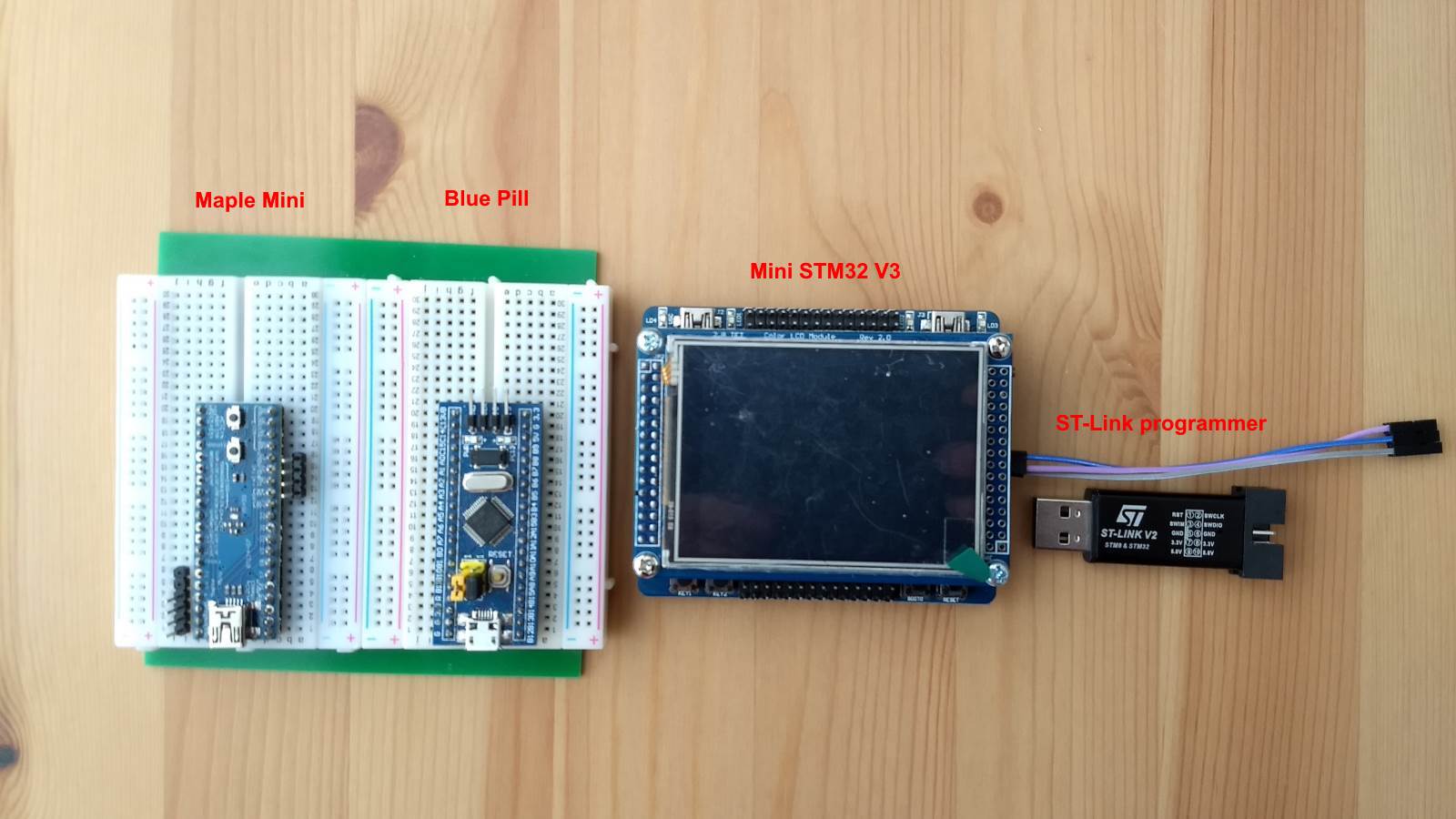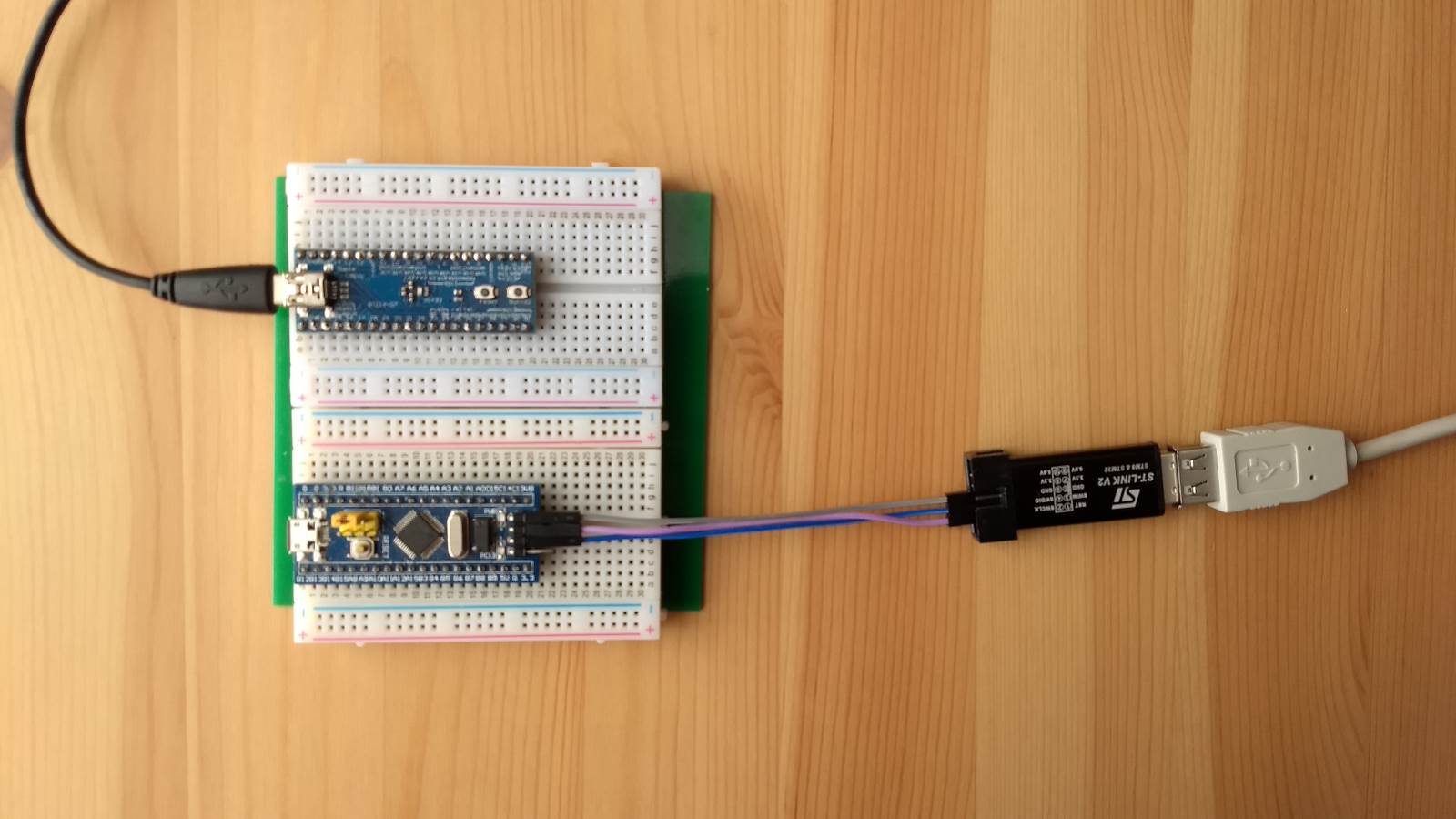
Installation
Start Arduino IDE and edit Preferences:File -> Preferences : Additional Boards Managers URLs:
https://github.com/stm32duino/BoardManagerFiles/raw/master/STM32/package_stm_index.json
Tools -> Board -> Boards Manager

Once installed, the STM32 board configurations will be available in the IDE eg:

You will also need to install STM32CubeProgrammer(which needs Java 8) from ST. In addition, purchase a ST-Link V3 Mini programmer. In order to install a HID bootloader into the board, use the ST-Link programmer to burn it. I managed to program the bootloader into the Maple Mini and Blue Pill after a lot of fiddling around but the Mini STM32 V3 did not work. The steps are:

- Download HID bootloaders from here.
- run STM32CubeProgrammer
Connect to ST-Link V3 programmer
Perform Full chip erase
Select an appropriate HID bootloader and program the chip. - Power cycle the STM32 board. The builtin LED should start blinking rapidly. This indicates the bootloader is waiting to accept a sketch for the first time.
- Upload the Blink sketch.
> Trying to open the [COM19]... > Unable to open the [COM19] > Searching for [1209:BEBA] device... # > [1209:BEBA] device is found ! > Sendingcommand... > Flashing firmware... .
> Trying to open the [COM19]... > Toggling DTR... > Searching for [1209:BEBA] device... ## > [1209:BEBA] device is found ! > Sendingcommand... > Flashing firmware... . 1024 Bytes . 2048 Bytes . 3072 Bytes . 4096 Bytes . 5120 Bytes . 6144 Bytes . 7168 Bytes . 8192 Bytes . 9216 Bytes . 10240 Bytes . 11264 Bytes . 12288 Bytes . 13312 Bytes . 14336 Bytes . 15360 Bytes . 16384 Bytes . 17408 Bytes . 18432 Bytes . 19456 Bytes . 20480 Bytes > Done! > Sending command... > Error while sending command. > Searching for [COM19] ... > [COM19] is found ! > Finish
Instead of the HID bootloader, you can upload using the ST-Link programmer which always works. You need to connect to SWDIO, SWDCLK, GND on the board and use the SWD upload method.

The STM32 boards are much faster, have more GPIOs and are cheaper than the Atmel ATMEGA328P boards but API libraries may not be available. Check before committing to the STM32 for your project. You can always port or suggest the API author port it to the STM32 platform though.